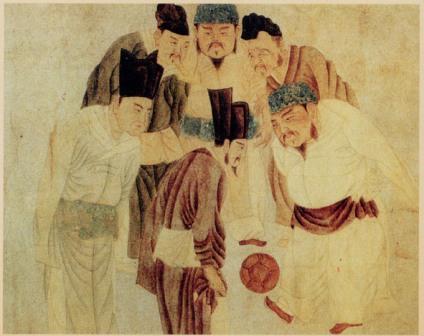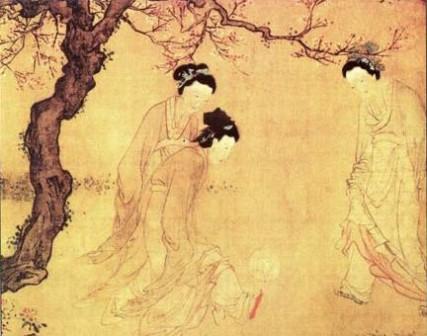Posted 2017/8/17
Football, or to be more exact, soccer, was first played in China in the Han Dynasty (hàn cháo 汉朝) (206 BC –AD 220). Then, as now, the actual ball was made of leather, and inflated with hair and other soft fillings rather than air. That the so-called beautiful game has such a long history in the celestial kingdom may come as a surprise. The astonishing fact of the matter is that it was played by both men and women. This is attested by Han Dynasty historical records and images on bricks. The sport’s emphasis at that time was on individual rather than team skills.

Football in the Han Dynasty was played on a pitch bounded by low walls on all four sides. There were 12 players on each side and two referees – chief and deputy. Han Dynasty strategists considered football, or cuju (cù jū 蹴鞠), as an effective form of military training. It helped to build up soldiers’ physique, nurture valor and acquaint them with the subtleties of attack and defense. When celebrated Han general Huo Qubing led his troops to the Gansu Corridor to fight the Xiongnu (xiōng nú) invaders, he gave orders to build and play upon a football pitch. This was an effective way of boosting troop morale as well as keeping them fit.
Female footballers appeared once more in the Tang Dynasty (táng cháo 唐朝) (618-907) at the time when air-inflated footballs, made from eight pieces of leather stitched together over an animal bladder, appeared. Women were the main exponents of a game that was actually a kind of reverse kick-basketball. Players from both teams took turns at aiming for a single, aerial, goal that hung in the center of the pitch. It was constructed out of two 10-meter-high poles, between which hung a net with an opening one meter in diameter.
The succeeding Song Dynasty (sòng cháo 宋朝) (960-1279) is regarded as the golden age of cuju in China. Both single- and double-goal football were played throughout, but it was the latter that became a national favorite, both at court and among the common people. Improvements in football-making technology, whereby the shell was made from 12 rather than eight pieces of leather, also gave the ball a rounder shape.

A major aspect of Song Emperor Huizong’s (huī zōng 徽宗)birthday celebrations was a soccer match between royal teams. Two referees would certainly have been warranted on these occasions, as the losing team faced flogging and having their faces smothered in yellow and white powder. Soccer matches were eventually institutionalized and incorporated into festive occasions. They commenced after all in attendance had drunk their sixth cup of wine. Being played in the spirit of performance rather than competition, they were less ferocious than Emperor Huizong’s birthday matches.
It was also during the Song Dynasty that football clubs, known as Yuan Societies, first appeared in China. Their players were called Yuan mates, and had the hypothetical right to transfer to other clubs. Leaving a Yuan Society, however, was no easy matter. Yuan mates seeking to play elsewhere were required to give detailed information about their coaches and previous career experience and also to pass rigorous tests of foot balling skill. One such rite of passage was keeping the ball in the air for 100 kicks off either foot.
Cuju maintained its popularity right through the succeeding Yuan (1279-1368) and Ming (1368-1644) dynasties, but declined during the Qing Dynasty (1644-1911). The rulers of China’s last imperial dynasty were of the Manchu ethnicity. They espoused archery and wrestling, preferring to inhibit team sports that could be a front for subversive groups.